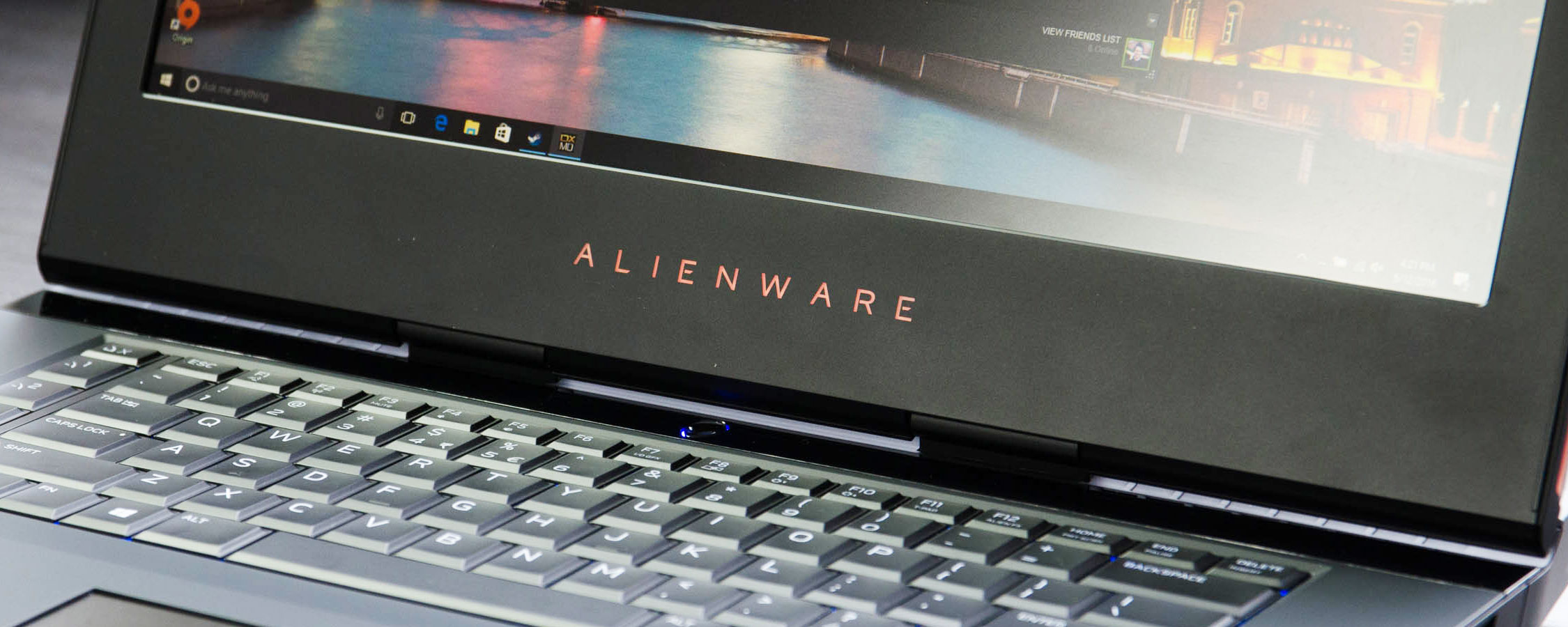Graphics Performance
Now for the fun stuff: graphics performance.
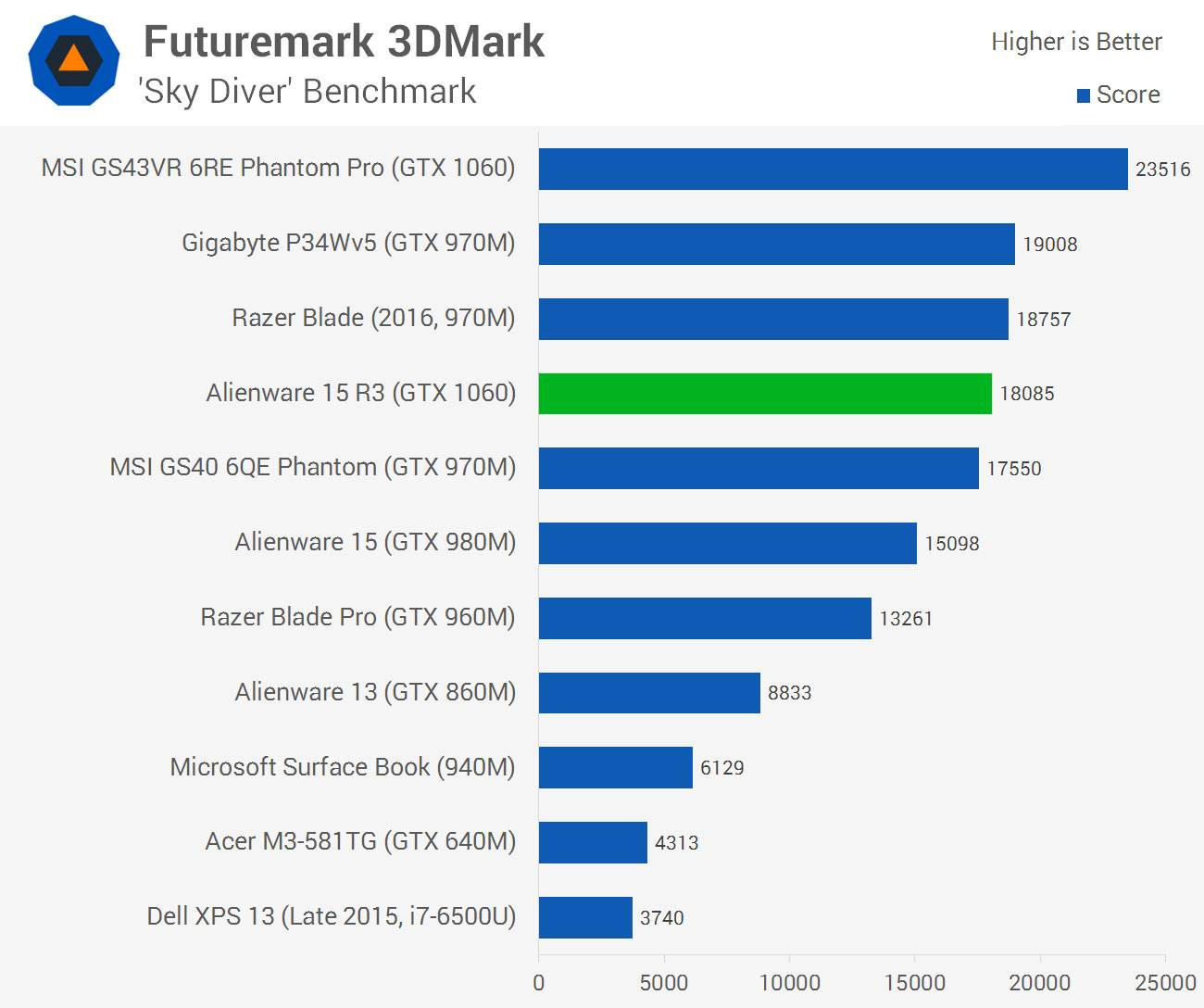
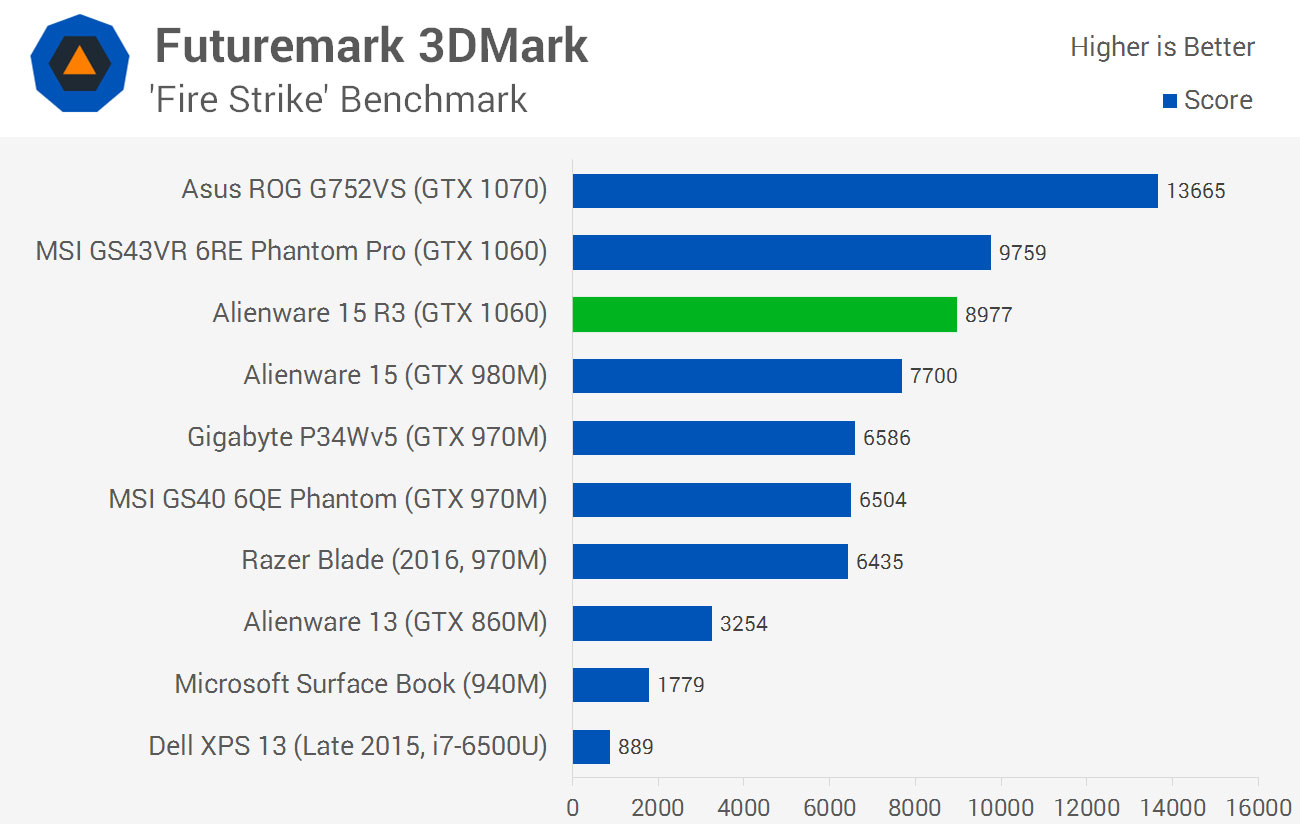
Looking at 3DMark to begin with, the Alienware 15 R3 doesn't perform particularly well. The GS34VR, another GTX 1060 laptop, is 30 percent faster in Sky Diver and 9 percent faster in Fire Strike, which is no small feat from a laptop with largely the same hardware. This isn't good news for the Alienware 15, but this is only a synthetic benchmark; let's take a look at actual gaming performance.
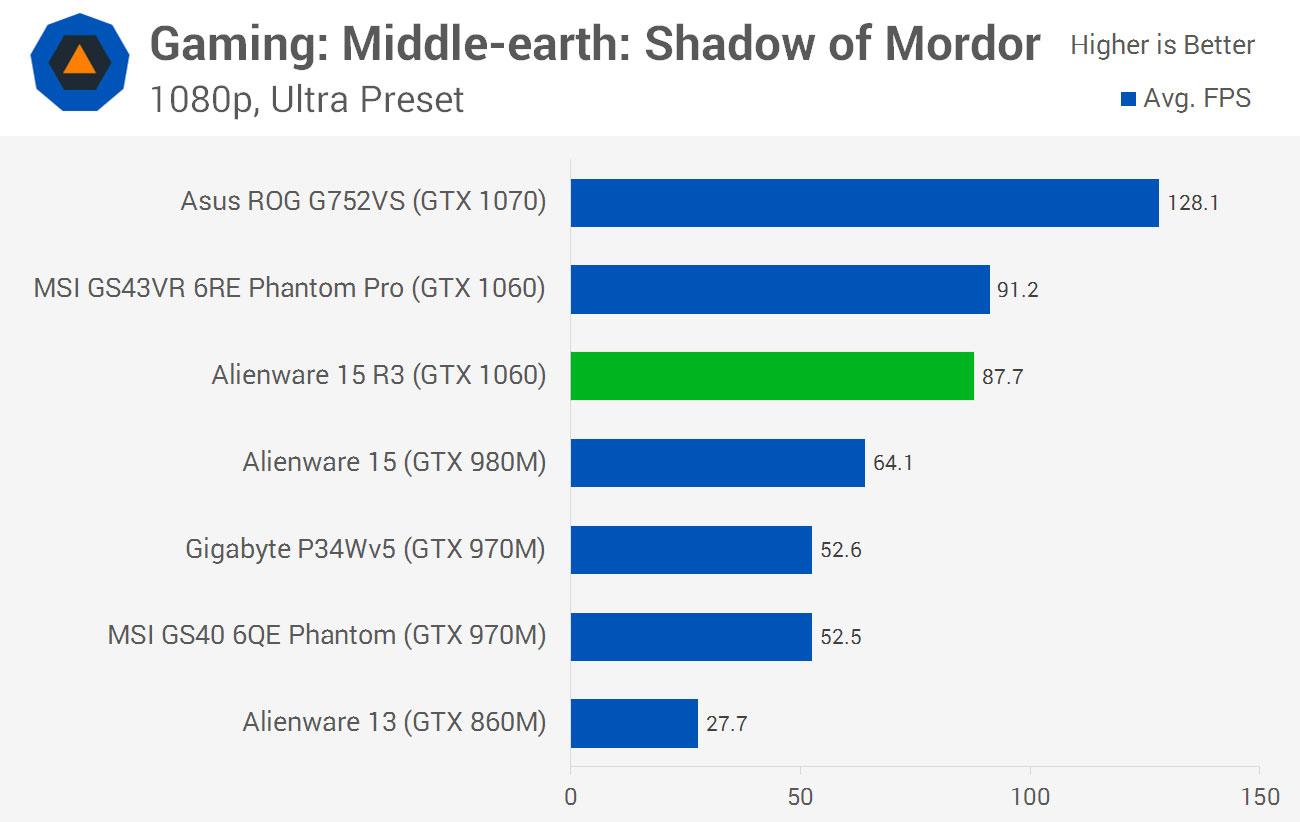
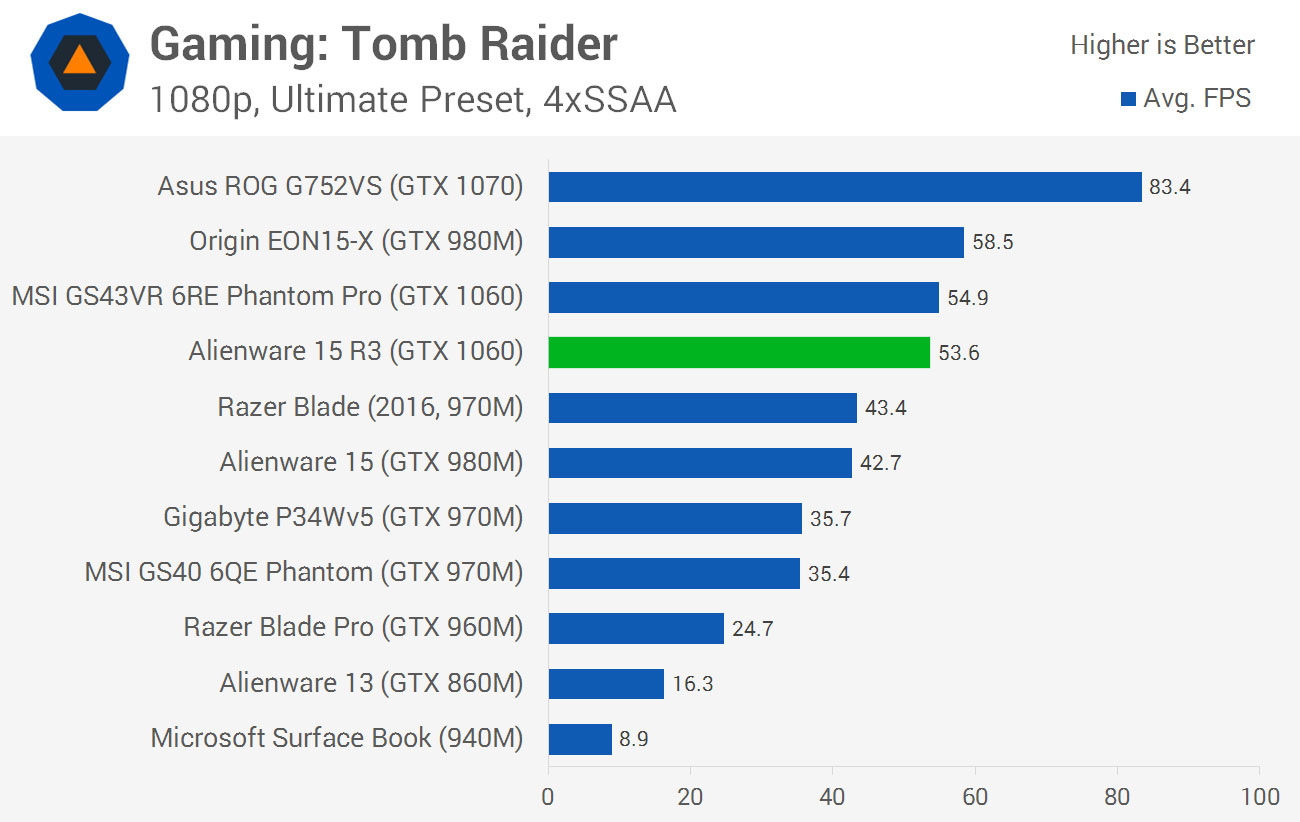
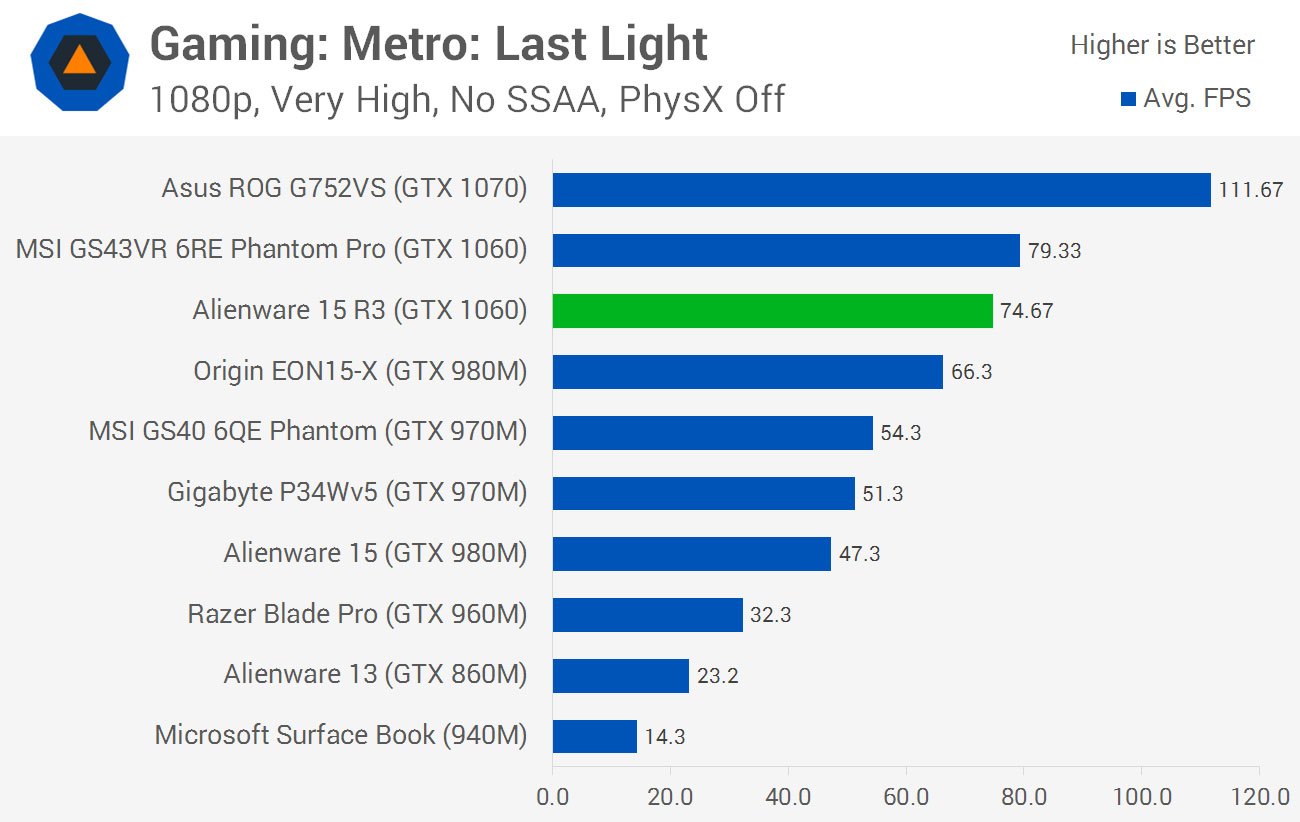
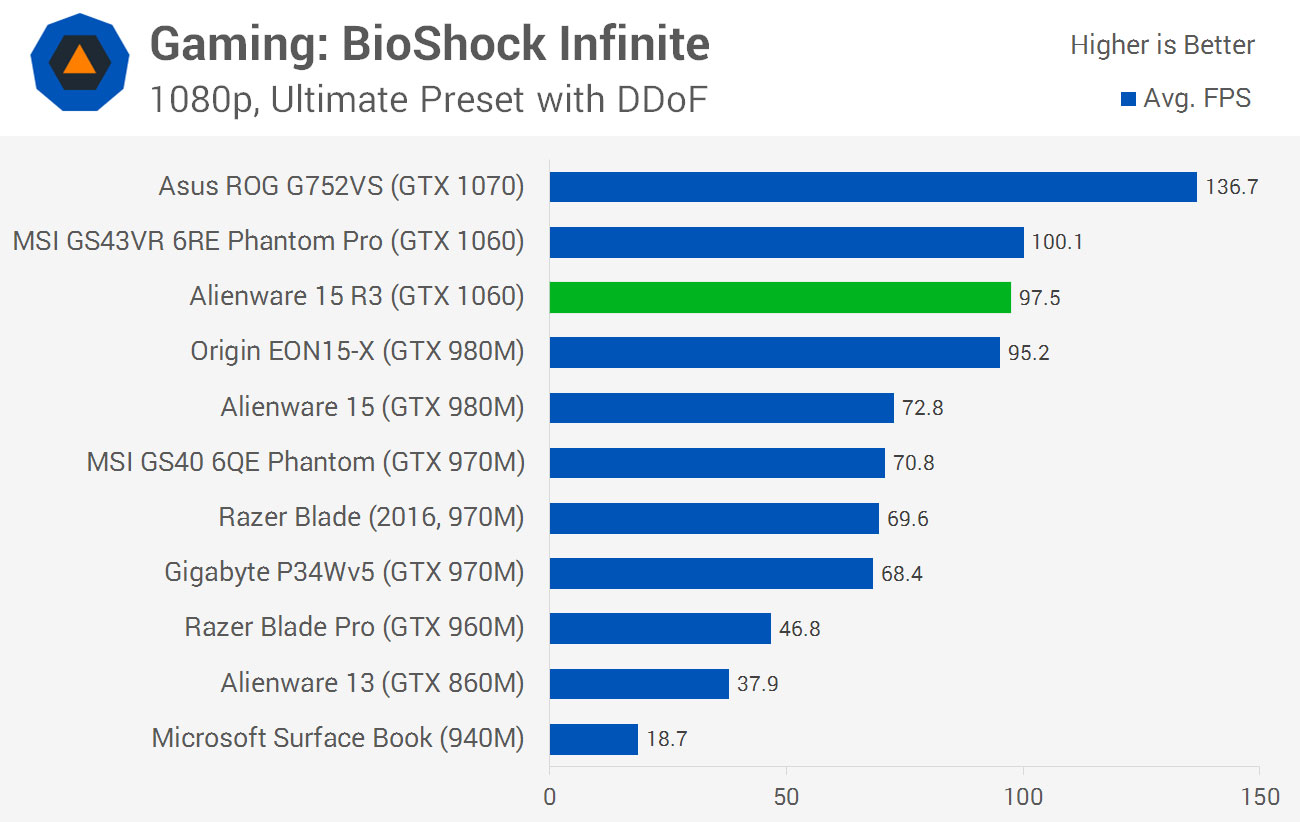
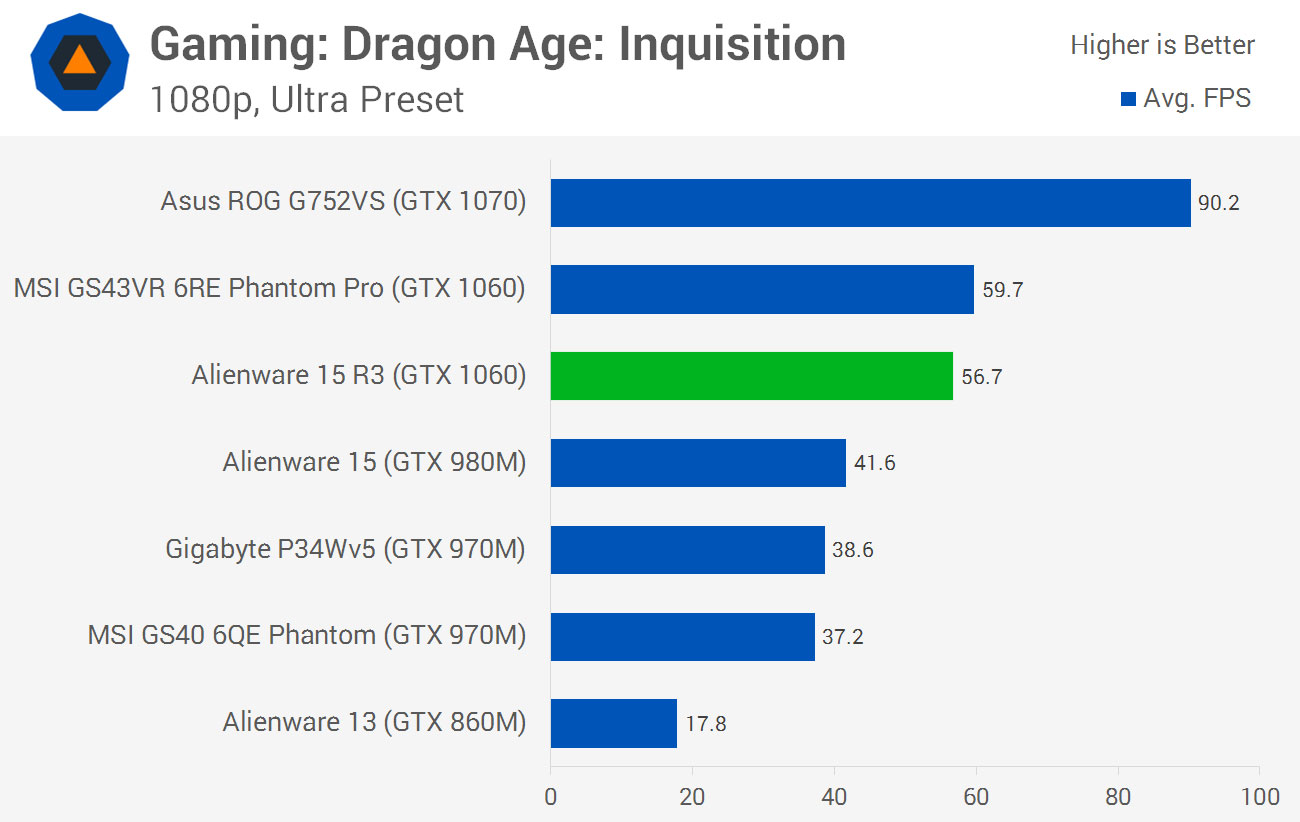
Looking at the good news first, the Alienware 15 R3 is 40-50 percent faster in games compared to previous-generation gaming laptops that used the GTX 970M. If you're upgrading from last year's Alienware 15, for example, this is the sort of huge performance gains you can expect. Often this is the difference between hitting 40 FPS and 60 FPS at a given quality level, and that's a big deal.
The bad news is this Alienware 15 was routinely beaten by MSI's GS43VR 6RE Phantom Pro. MSI's GTX 1060-equipped 14-inch laptop was only slightly faster in most tests - typically under 8 percent faster - however this is a larger margin that I'd like to see from two laptops that are nearly identical from a hardware perspective. In raw FPS numbers, the GS43VR held a 3-5 FPS advantage in most cases, and that's nothing to sneeze at.
I am not 100% sure why the Alienware 15 is slower than the GS43VR 6RE, however it's possible that MSI's offering has a better power management and thermal solution that allows its GTX 1060 to hit higher boost clock speeds on a more consistent basis.
Throughout my testing of the Alienware 15, the GPU consistently sat well below the card's rated boost clock speed, sometimes reaching only 1430 MHz depending on the game. This isn't a huge surprise considering the GPU is regularly power limited (the GTX 1060's TDP is just 85W), and temperatures typically hit 90°C during sustained gaming sessions. As such, there is essentially no room for overclocking the GPU.
Thermal performance is disappointing from the Alienware 15 considering its large cooling solution; the GPU still runs quite hot, although typical CPU temperatures of 77°C under heavy load are respectable. The laptop is very loud while either the CPU or GPU (or both) are being stressed, as its fans spin up to produce a tone similar to a small jet engine. The in-built speakers can overpower the fan noise in games, however you'll want a good pair of headphones to fully block out the noise.
The benefit to the Alienware 15's loud and beefy cooling solution is keeping the key areas of the laptop's surface cool during gaming. The WASD keys reach just under 33°C during an extended gaming session, and its surrounding keys are under 30°C. The hottest part of the keyboard is around the 9 key, which reaches over 44°C under heavy load, however this area is seldom used for gaming applications.
